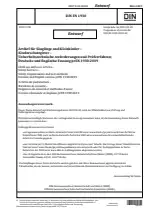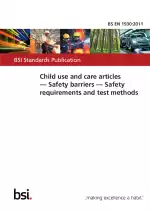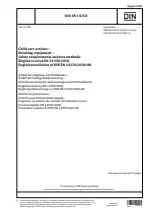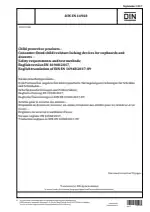Child Use and Care Articles - Safety Barriers - Safety Requirements and Test Methods
Also Known As:
The child safety barriers used in residential indoor settings are the subject of the DIN EN 1930 standard's safety criteria and test procedures. These barriers are made to be put up across openings to limit a child's access within the house and keep infants under 24 months from passing through. It's crucial to remember that this regulation does not apply to safety barriers intended for use on windows.
The Technical Committee CEN/TC 252 "Child Use and Care Articles" is responsible for creating this standard, and AFNOR (France) serves as the secretariat. The DIN Timber and Furniture Standards Committee (NHM), more especially the Working Committee NA 042-05-13 AA, is the relevant German Body in this situation. Similar to CEN/TC 207/WG 2, CEN/TC 364, and ISO/TC 136/WG 6, this body is a mirror committee.
| Descriptors | Babies, CE marking, Child protection, Child safety, Child safety barriers, Childproof equipment, Children, Closures, Definitions, Design, Dimensions, Equipment safety, Erecting (construction operation), Fitness for purpose, Furniture, Grille rods, Hand-rails, Household use, Infants, Instructions for use, Limitations, Locking and locating devices, Marking, Materials, Protective gratings, Safety, Safety engineering, Safety of products, Safety requirements, Spaced, Specification (approval), Suspending (hanging), Testing, Wood, Suspensions, Distances, Bodies |
| ICS Codes | 97.190 - Equipment for children |
| Language(s) | English + German |
| File Size | 2.6 MB |








